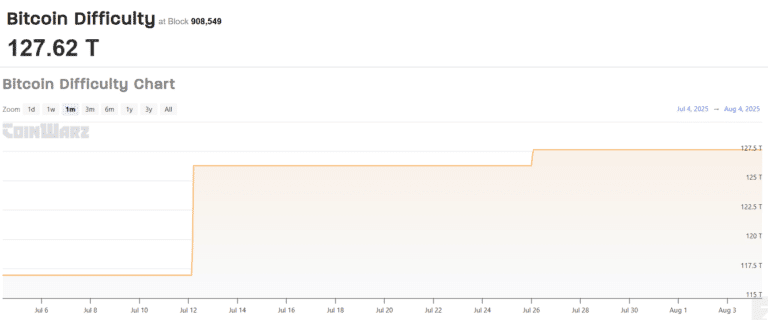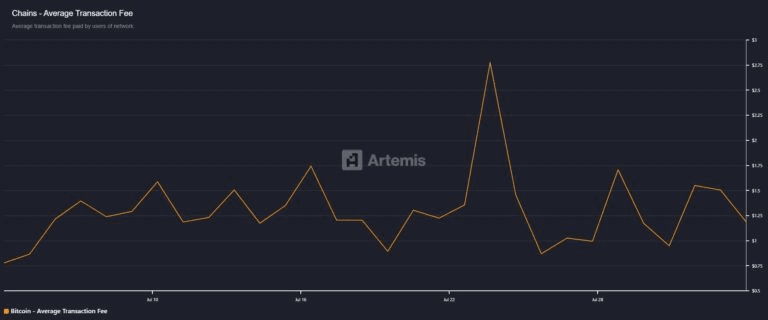Bitcoin mining now takes 127 trillion attempts - and that's good 127 trillion attempts - and that's good.
Bitcoin mining difficulty has reached an all-time high of 127.6 trillion. Theoretically, this is bad news for miners. So why are they still optimistic?
Bitcoin [BTC] mining has become more difficult. Network difficulty has reached an all-time high of 127.62 trillion, following a steady increase in the Bitcoin hash rate, which now exceeds 1.13 zetta hashes per second (ZH/s).
Simply put, more computing power is being added to the network. As a result, the protocol responded by raising the difficulty level, which means increased hash power, higher energy consumption, and lower profit margins.
Theoretically, this seems bad news for miners. However, the Miner Position Index (MPI) has dropped into negative territory. If the pressure following the halving is real, why are miners still taking a defensive stance?
Bitcoin mining is experiencing the toughest conditions yet.
To clarify, the number 127.62 trillion refers to Bitcoin mining difficulty. This means miners now need to make over 127 trillion hash attempts, on average, to successfully mine one block.
This number is adjusted approximately every two weeks based on the computing power on the network. The higher the hash rate, the harder it is for the network to find a block.
The chart below shows two clear jumps in difficulty. One was around July 12 and the other near July 26. These increases mean more miners (or more powerful machines) are joining the network.
Bitcoin Mining Difficulty
Source: CoinWarz

As a result, the network has become more competitive than ever. With Bitcoin mining difficulty reaching record levels, miners are now operating in the most challenging environment ever.
After the halving, it became more difficult. Rewards dropped to 3.125 Bitcoin, which means miners earn less for the same hash power (or more). This puts significant pressure on profitability.
The big question now is: Is this pressure worth it?
Mining has become smarter, not harder.
In just one month, Bitcoin mining difficulty rose by 11 trillion units, from 116 trillion to over 127 trillion, indicating a massive adjustment in the network. Miners certainly felt the pressure.
The Miner Position Index (MPI) has surpassed level 2, not once, but three times. Typically, this indicates that mining companies are offloading Bitcoin to cover rising overhead expenses as profit margins shrink.
Could this pressure return? Perhaps. But for now, on-chain signals indicate miners are stable. Why? The average Bitcoin transaction fee has risen by over 50% month-over-month, helping to offset the decline in block rewards after the halving.
Bitcoin Fees
Source: Artemis Station

Simply put, the process of Bitcoin mining is now a strategic game.
With record levels of difficulty, miners are seeking to profit in other ways. The rising hash rate reveals the story: next-generation devices are available online, improving efficiency at lower costs.
Add to that rising fee revenues and a 10% increase in Bitcoin in July.
At this price, the block reward of 3.125 BTC alone gives miners over $384,000 per block, and this is before accounting for fees, making it worth playing for.